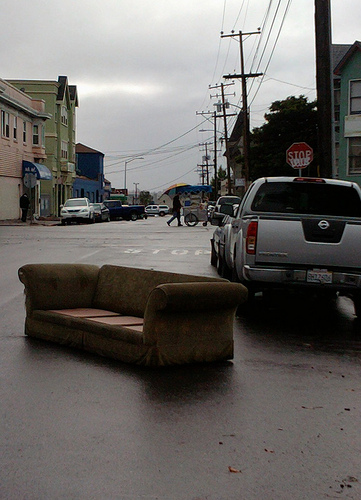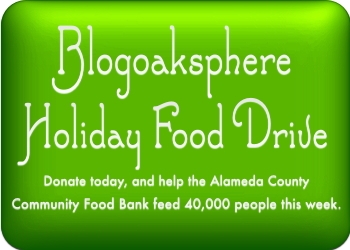I went up to Berkeley on Tuesday to remind myself of how the other half lives, and as I rode through the UC campus, I was reminded of something that came up in the comments on one of my earlier posts: college campuses are among the few places where pedestrians, bicyclists and low-speed motorized vehicles mix freely in “shared space” in the United States, and they offer prime examples of how mixed-use, unsegregated roads and paths can be safely used by slow-moving cars, pedestrians, bicyclists, wheelchairs, skateboards—whatever—as long as everyone is paying attention.
Indeed, the fact that all those modes of transportation are forced to coexist on the paths and roads of a campus such as Cal’s is what causes everyone to pay more attention, creating places where people can get where they are going at whatever pace they choose, with almost no conflict or inconvenience. It’s part of what makes a nice college campus feel so utopian compared to your average city street. In most cities, the majority of public space is devoted to moving or parked cars, with pedestrians segregated onto narrow strips of concrete on either side and cyclists uneasily mixed in with the cars (uneasily because many drivers perceive the roadway as “their” turf, and see slower-moving bicycles as obtrusive obstacles). On a college campus, the pedestrian tends to be the privileged one, while cyclists are expected to proceed with caution and automobiles are heavily restricted. Shuttle buses, utility trucks or other motorized vehicles that share the pathways have no choice but to travel at safe speeds and yield to pedestrians.
Another principle of the shared space philosophy that I was reminded of is the importance of making the space truly shared. Even a subtle division of the space by painting a strip on a path and telling walkers and bikers to stay on opposite sides of the line can have unintended consequences, especially if there is a limited amount of space, causing people to stray from “their” territory. The lovely path over the Brooklyn Bridge, for example, is divided into a bike lane and a walking lane, and back when I used to commute over the bridge by bike, the division of the space seemed to cause as many problems as it solved—inevitably, pedestrians would cross the dividing line and enter the bicycle side, either because they wanted to pass a group of slower pedestrians, or because they wanted to pose for a photo next to the opposite railing, or because they just hadn’t noticed that the path was divided into a ped lane and a bike lane. Cyclists would be irritated by the incursion into “their” space, so they would angrily swerve around the pedestrians at high speed, often having to cross into the pedestrian lane, which would cause other pedestrians to feel threatened by having a high-speed cyclists suddenly invading “their” space. The number of conflicts between cyclists and pedestrians may be reduced, but the unpleasantness of those conflicts when they do occur is greatly increased.
Given the fairly narrow path on the Brooklyn Bridge, the large number of pedestrians who walk across the bridge at certain times, and the desire of commuting cyclists to be able to ride at high speeds across the long bridge, that path may not actually be a great candidate for truly shared space, but it does demonstrate that dividing space so that each mode of transportation has its own territory doesn’t eliminate all conflicts—it might reduce their number, but when conflicts do arise, they may not be as smoothly negotiated as they are on, say, the paths of the UC Berkeley campus.
There is some effort to keep bicyclists off of some Berkeley campus areas, but in my opinion, it’s a good thing that those rules are so widely ignored—if bikes stayed on the paths that are marked as bicycle routes, then I think there would be worse conflicts between walkers and bikers at those places where they need to interact. As it is now, bicyclists tend to ride among pedestrians nearly everywhere on campus whether they are supposed to or not, and everyone seems to negotiate their way around each other just fine, because walkers and bikers alike are very alert to the possibility of encountering a faster or slower traveler at any time.
(Continued)














